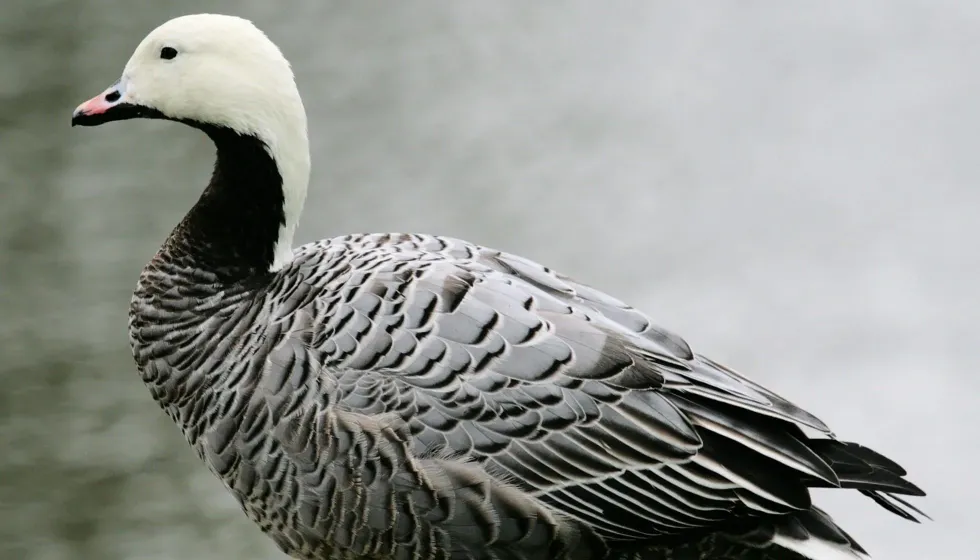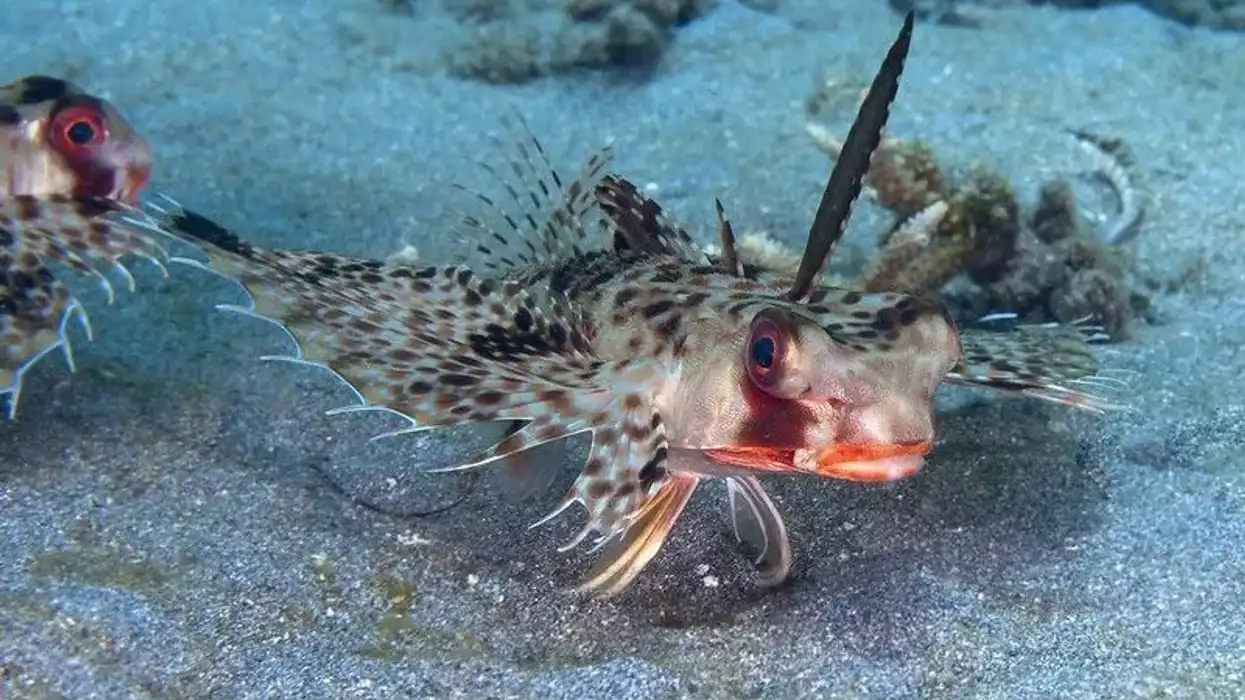The emperor goose (Anser canagicus) belongs to the category of waterfowl birds. The family Anatidae to which it belongs also contains other similar species of birds such as geese, ducks, and swans.
This bird is bluish-gray in color and has a black chin and throat, white head, orange-yellow legs, and its body often becomes reddish-brown during summer. Female emperor geese are slightly smaller than the male counterpart.
Emperor geese are mostly found in Alaska, Canada, and the United States in the winters. Hence, emperor geese are North American. They usually migrate during summers to Arctic climates in the Bering Sea.
In winters, it mainly lives along the coasts of the Aleutian Islands after its southerly migration. They construct their nests in holes that they fill with vegetation and feathers. Emperor geese are herbivores but also sometimes feed on mollusks and crustaceans.
They are diurnal and mostly feed in their family groups in wildlife, but in winter gather in big flocks. Emperor geese are monogamous and they form a new bond only after the death of their mate. Their breeding season is from May to June.
Males do not take part in making the nest but usually defend their family from enemies in the wildlife. They stay near the nesting site to ward off danger. Newborn emperor geese can walk and swim within a few hours of their birth.
They have been listed as Near Threatened by the IUCN as most of their population lives in Alaska. The emperor geese population residing in the Yukon Kuskokwim delta accounts for about 90 percent of the region. They are threatened by climate change and pollution. Coastal oil pollution is a big threat to these birds.
You may also check out the fact files on swan goose and ring-necked duck from Kidadl.
Emperor Goose Interesting Facts
What type of animal is an emperor goose?
The emperor goose is a waterfowl bird belonging to the same category of birds as ducks and swans.
What class of animal does an emperor goose belong to?
The emperor goose is a bird belonging to the class Aves.
How many emperor geese are there in the world?
The current population of emperor geese in the world is approximately 150,000.
Where does an emperor goose live?
An emperor goose lives in Arctic and sub-Arctic regions, generally in the range of Alaska, the Bering Sea, the Yukon Kuskokwim delta, and other marine ice-free habitat ranges.
What is an emperor goose's habitat?
Most of these birds live in a tiny concentrated area in Alaska called the Yukon Kuskokwim delta. These wetlands provide the ideal habitat for these birds to migrate, stage, and nest their eggs in the season.
The Yukon Kuskokwim delta supports the growth of alkali glasses, arrowgrasses, tundra grasses, sea lettuce, and sedges. These act as food for emperor geese. During the migration season, they take refuge in lagoons and other tidal areas belonging to the northern Alaska Peninsula.
Generally, their survival is supported by the habitat offered by the Arctic and sub-Arctic regions. They prefer to reside in mudflats and rocky shores in winters in ice-free areas. In summers, they reside in tundra wetlands with abundant sea vegetation.
Who do emperor geese live with?
The emperor geese population usually only interacts with their family of birds but tends to flock in large numbers during the breeding season.
How long does an emperor goose live?
The bird has an average lifespan of six years but has been found to live for 12 years at a maximum.
How do they reproduce?
The reserved emperor goose is very antisocial and is rarely seen when it is time for reproduction. Emperor geese form loosed flocks or groups when it’s time for mating in the nest, and fly northwards in the summers to breed.
They are monogamous in nature, and only find another mate to nest with if the previous one dies. Copulation is an uncommon sight and there are head-lowering motions and nasal sounds.
The female selects the nesting site and incubates the eggs in the nest. The number of eggs in the nest of the emperor goose range between two to eight per female, although the average number of eggs per nesting is four to six.
The eggs hatch after a period of 20-25 days and the hatchlings are covered in down feathers. They move out of their nest on the first day itself.
What is their conservation status?
This white head bird of North America has been listed as Near Threatened by the IUCN. There are not very clear reasons for the decline of emperor geese.
The most probable reasons seem to be climate change, pollution particularly oil pollution in coastal areas, and hunting. Emperor geese hunting is not a very frequent phenomenon though and takes place more in Russia.
They are not part of the usual wildlife in most regions and reside mainly in a few parts of Alaska.
They have to compete with cackling geese for food and this might also be a factor in their population decline. The Red List mentioned that only 85000 emperor geese in population were now left and gave this species a Near Threatened status.
In recent years, the bird population has become quite stable in the North American range areas. Besides the IUCN listing, the emperor goose of North America on the Continental Concern Score has been rated 14 out of 20.
Emperor Goose Fun Facts
What do emperor geese look like?
The Alaska emperor goose has a stout body covered with blue-gray and white feathers. It has a pink bill and yellow-orange legs with webbed feet.
It is smaller than other similar species like geese and swans, and amidst the species, the males are slightly larger than the females. Their heads turn reddish-brown due to the iron oxide content in tidal pools, where they feed in summers.
How cute are they?
Emperor geese are beautiful birds with snowy white heads, black throats, and a scale-like black and white spotted plumage. They are cute, feathered creatures, and their young ones are rather adorable.
How do they communicate?
Emperor geese are less noisy than other varieties of geese. They have a very distinct hissing sound. The emperor's goose call is more hoarse and nasal as compared to sounds made by other varieties of geese and swans.
How big is an emperor goose?
The Alaska emperor goose is about 25.5-27.5 in (65-70 cm) in length and about 19.6-23.6 in (50-60 cm) in height. It is about half the size of a swan.
How fast can an emperor goose move?
Most geese and swans fly at speeds of 40.3-52.8 mph (65-85 kph). Emperor geese fly lower than other varieties of geese and swans due to their short wings and quick strokes.
How much does an emperor goose weigh?
The male weight of an Alaska emperor goose ranges between 6-6.8 lb (2.7-3.1 kg). Their mean weight is found to be 5.1 lb (2.3 kg) in the case of males, while in females the mean weight is 4.3 lb (1.9 kg).
In the case of juvenile males, the average weight is 2.5 lb (1.1 kg). Female juveniles have an average weight of 2.4 lb (1 kg). After five to seven weeks of hatching has passed, the male goose has an average weight of 5.2 lb (2.3 kg). The female goose has an average weight of 4.2 lb (1.9 kg).
What are the male and female names of the species?
Male geese are called ganders, while females are called a geese.
What would you call a baby emperor goose?
A baby emperor goose is called a gosling.
What do they eat?
The diet of the emperor goose consists of tundra vegetation and seaweed, although it can also consume insects, molluscs, and crustaceans. They mostly feed by grazing. They consume leaves of sedges at the time of breeding.
There are some potential predators of the goose emperor in wildlife, such as the Arctic fox, red fox, snowy owls, mink, and eagles.
Are they dangerous?
Due to their tundra habitat, emperor geese rarely interact with humans. However when faced with the danger of a predator, they can become aggressive. Male emperor geese are easily triggered and can attack humans or predators that are approaching their group or territory.
Would they make a good pet?
No, the emperor goose is a wild variety of fowl and prefers to live near glacial and sub-Arctic settlements. They cannot accommodate in other habitats comfortably. It is a Near Threatened species and it is not a good idea to pet them.
Did you know...
The emperor goose is also called beach goose or painted goose.
Fossil findings signal that geese have been around on earth for 10-12 million years.
There is a seasonal change in the colors of the emperor goose. Usually white in color, the head of the goose emperor turns a light reddish-brown.
This variety of goose is further classified under its genus Chen and falls under the sub-classification Philacte.
It is a migratory bird, which travels northwards in the summers for reproduction or breeding, and flies back southwards in the winter.
A group of emperor geese can be called a flock, gaggle, or wedge.
The goslings or young emperor geese are precocial which means that they learn to walk and move out of the nest on the first day of hatching.
The female goose emperor plucks her own feathers to create a warm and downy nesting site to keep her eggs warm.
The name of this species is due to their white crown and nape.
How to tell the gender of an emperor goose?
The gender of emperor geese can be determined by size. The male goose emperor is larger than the female, with a wider wingspan. The females are also less aggressive and mostly tend to stay near the nesting site.
What is the history of emperor geese?
The native place of emperor geese is supposed to be the Aleutian Islands in Alaska. They were first named Anas Canagica in 1802.
In 1879, Edward William Nelson found the emperor goose to be abundant in the Yukon Kuskokwim delta in Alaska. In 1923, Arthur Bent saw much fewer specimens of emperor geese there and reported a significant population decrease in the area.
Here at Kidadl, we have carefully created lots of interesting family-friendly animal facts for everyone to discover! Learn more about some other birds from our blue-winged teal facts and laughing gull facts pages.
You can even occupy yourself at home by coloring in one of our Emperor Goose coloring pages.









